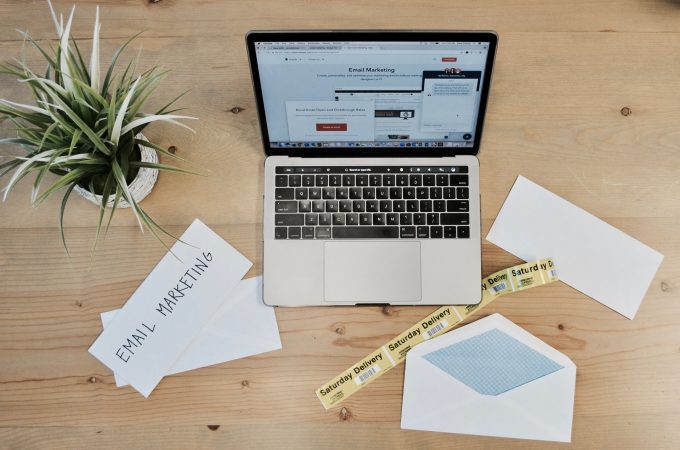
10 scary-good tips for crafting email subject lines
Here’s a scary statistic: 69% of email recipients report email as spam based solely on the subject line! Also, 47% of email recipients open an email based on the subject line alone.
Subject lines can truly make or break your open rate and they shouldn’t be treated as an afterthought after crafting the main message of the email. They are the first impression a person has with your email marketing campaign so it’s imperative it’s a good one!
Writing subject lines shouldn’t be a scary thing but no email marketer wants to be ghosted by a subscriber due to a bad email subject line. But how do you know if your subject line is bad?
Well, it’s all treats, no tricks in today’s blog post as I cover some best practices for crafting email subject lines.
1. Be familiar
Gone are the days when you would send emails with a no-reply email address and you now should send emails customers can reply to. But it’s also a good reminder to send the email from a name your customers recognize. Whether you go classic with something like hello@yourbrandname.com or you have a human persona like Jane Doe who sends out all of your emails, you should have a recognizable name that’s attached with your subject lines.
There are times I’ll see a new name come through in my promotions tab and it throws me for a loop. I don’t know you. I don’t know why you’re emailing me. Then I open it and am annoyed that I got tricked into opening an email I don’t care about. I think a lot of brands do this for C-Suite executives like a message from the CEO or something, but always think of your email subscribers. Is the CEO’s name well-known enough to get away with that or does it come across like a clickbaity tactic?
Pick one from name and stick with it to be consistent and help your subscribers immediately know who is sending them email.
2. Use your preview text
Use your available real estate by making sure your preview text accompanies or enhances your subject line. Don’t just repeat your subject line or allow your email builder pull in the first line of text from the email.
We’ve all seen those emails where it pulls in the “view web version” or “view our mobile site.” Riveting stuff, right there! Tease what’s to come in your email with your preview text and encourage people to click.
Let’s look at some examples. The bolded text is the email subject line and the regular text is the preview text.
- Come chat with an editor! Scribbler’s live chat is tomorrow. Our exclusive chat with editor Alison Dasho is TOMORROW, August 11th at 1pm ET.
- Stephanie, save up to $600 with a last minute travel deal! Save big on 2022 tours
- You’re invited to MINDSET MAGIC. My first 90-minute masterclass takes place live next Saturday, August 20th on Zoom starting at 1:00pm Eastern…
- The Summer Sale ends tomorrow! Save 55% before it’s too late!
- Run your errands without running anywhere. Get your BBQ-ready drinks in your bathrobe.
- New Styles Just Added – Up to 70% Off. These deals end 8/15
- Here’s why you should explore Alaska with Royal Caribbean. Hint: it’s one cool adventure
- Need a vacay? We’ve got some amazing deals on last-minute getaways. Get 1 FREE night, when you book 3 or 4 nights.
- The Forever Fabulous Sale starts NOW! Two days only. Shop up to 50% off from IT Cosmetics, Biosilk & more.
Now, those are examples of brands using their preview text well, but I will say some of those subject lines still need some work! Why are some of these brands shouting at me? Why are some of the brands randomly capitalizing stuff? But I do think these examples demonstrate how to use your preview text to add some context and key details that play up your subject line.
3. Say the most, with the least
One study found that emails with 6-10 words achieve around a 21% open rate, but emails with 11-15 only get a 14% open rate. If possible, have no more than 10 words in your subject line, or between 40-60 characters.
4. Spam is delicious but spammy words are gross
No spammy words or spam elements in email subject lines, please! If you need to use spammy words like, free, earn, act now, cheap, for just a few dollars, bonus, no obligation, or you have to rely on spammy elements such as too many exclamation points or too many emojis, then your message isn’t compelling enough!!!!
5. No shouting
Like I pointed out in some of the preview text examples above (which are from emails sitting in my promotions tab), why are these brands yelling at me? Using all caps isn’t the right way to get people’s attention. It flags that something is wrong or someone is angry. Unless your brand name or product is in all caps, don’t default to it. Use your words to get your subscribers’ interest, not the caps lock key.
6. Engage
Subject lines have to engage the reader and compel them to take the action of opening the email. There are a few different methods of engaging or capturing people’s attention:
- Use questions
- Provide a sneak peek or something exclusive
- Tell them how to do something, join something or get something
- Lead with an eye-opening statistic
- Plainly state the offer contained in the email
- Be clever or use play on words
Another way to engage people is to appeal to their curiosity or build their trust to earn their click.
Use words that appeal to curiosity:
- Behind the scenes or sneak peek
- Be the first or limited
- Invitation only
- Secrets
- Unbelievable
- Little-known
- Myths
Use words that build trust:
- Approved
- Best-selling
- Expert or well-respected
- Proven
- Certified
- Effective
7. Be honest
What’s the point of your email? Are they getting a newsletter? Are they getting access to a great piece of content? Are they invited to an upcoming event or webinar? Great! Tell them!
Be honest about the content of your email and hint at what action people will want to take when they’ve opened the email. We all hate clickbait articles online but we hate wasting our time even more opening emails that mislead us or don’t deliver on their promise.
8. Be specific
If you have good data about your email subscribers, use it! Personalize subject lines with the recipient’s name, location, or even certain content topics they’ve liked in the past or relate it to hobbies you know they’re interested in. Tailored messaging is always a winning strategy when it comes to email subject lines.
9. Invoke FOMO, but apply YOLO
People don’t like missing out, hence FOMO, but it shouldn’t be the only tactic you use. Apply it sparingly to truly play up that sense of urgency where it matters. If everything is urgent or there’s always a sale that people shouldn’t miss they’ll start to tune out your messages. They’re not FOMO-inducing anymore as there’s always another opportunity. Don’t invoke FOMO in every email and think of YOLO but change it up to be, You Only Use It Once – at least only once every month.
10. Run A/B tests
It’s so easy to set up A/B tests but where I think many of us marketers drop the ball is in analyzing the results and taking the time to dissect the data to understand what it’s telling us about our subject lines. I admit I’ve been bad at that in the past too. It’s so easy to send an email, check open rates and CTRs and move on. Mission accomplished.
But, I think we do need to take that time and test subject lines to find what works for our subscribers and what doesn’t.
What other scary good tips for creating email subject lines do you live by? Share them in the comments below!




